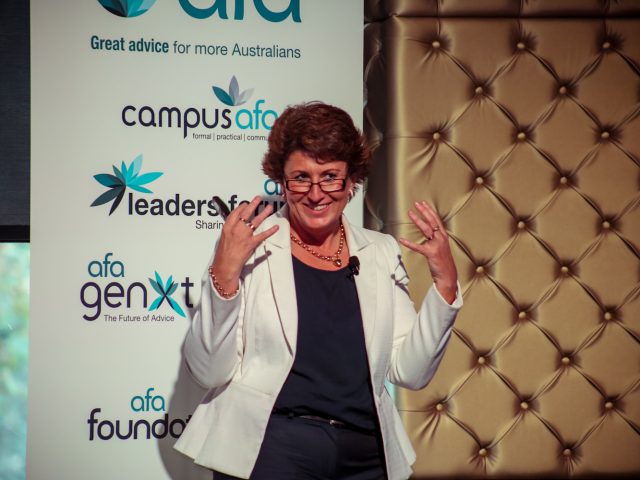As important as it is in business to know what to do, it’s often equally important to appreciate what NOT to do. This article from first-time riskinfo Magazine contributor, Margaret Rochford, focuses on the latter, as she outlines seven pitfalls to avoid when using social media to grow your business...
Many advisers are discovering the real benefits of using social media to connect with their clients and generate new prospects and partners. But for some, the reality hasn’t lived up to the hype.
Here are seven pitfalls to avoid when thinking about using social media or to improve the outcomes from your existing activities.
1. Lack of a clear strategy
The best results when using social media come from having a clear strategy. Put simply, it’s your roadmap to identify what you want to achieve and how you’re going to get there. Your strategy should include: who your target audience is (eg existing clients, prospects, and referral partners); what social media platforms you will use; what your social media objectives are and how these align with your business objectives; content creation and publishing approach; how you will measure results; available resources.
Without objectives you won’t have any way of judging whether the time and resources you’ve invested have been worth it. Examples of some goals for social networking sites like Facebook are to: create 50 new followers/fans within one month; increase the number of likes for your Facebook page by 20% within two months; number of customer comments posted.
2. Not knowing who you’re talking to
This may seem obvious but if you don’t have a good idea of your client profile or target client then you won’t know what social media platform to use or what to say to them. Facebook is the largest social networking site in Australia and is making increasing inroads with business-to-customer activity since the launch of Facebook Pages for business. LinkedIn is a great business-to-business networking site more suited to engagement with referral partners such as accountants. Make sure you match the best social media channel with who you want to connect with.
3. Failing to build a community
This is probably the most overlooked part of developing a social media strategy. Unfortunately, it’s not a case of ‘build it and they will come’. You need to have a clear idea on how you’re going to build your community of fans and followers. Here are a few simple steps to get traction quickly:
- Include social media icons and sharing buttons on your website so clients follow you or share content with friends and families.
- Add links/icons to your email signatures.
- Send an email blast to let clients know they can now find you on social media.
- Include links in your regular enewsletters.
- Update your other marketing materials to include social media icons and links.
4. No content strategy
Yes, content is king and one of the biggest drivers of success in the digital world. You may have a selection of articles you’ve written or sourced to begin with, then after a few months find you’re scrabbling around for new ideas and what to say.
To avoid this pitfall, you need to take the time to develop a process for how you’re going to get good quality content on an ongoing basis. Here are three questions you need to answer:
What do you want to say?
Content can be used to inform, educate, inspire or entertain but you need to have a few guidelines about what topics you want to cover. An editorial policy will ensure you’re always on message.
Where will you get content from?
This is the part that can take up a lot of time. Identifying sources of content before getting into social media can help reduce the risk of failure. Sources include:
- Your company – History, values, people, philosophy, events, community activities, awards, FAQs, case studies.
- Products and services – client stories, new products and features, statistics.
- Industry – changes to legislation, analysis and opinion on hot topics, industry events.
- Seasonality – EOFY, Christmas, New Year
You can either create your own content, or curate content from other sources. If you are producing your own content remember to include keywords to help with SEO and indexing by search engines. Where possible, use content that has a long shelf life i.e. evergreen, so you don’t have to worry about updating it.
Content can be reused or recycled. For example, an article from your newsletter can be repackaged as a factsheet, how to guide, checklist, infographic, podcast or video. Or update it with a new headline or statistics and recycle it.
How often will you post content?
Once you’ve worked out where you’ll get content from, you’ll need to put together a publishing calendar. This sets out the frequency of when you’re going to publish content, on which social media platform, what time of day and what the content will be.
How often you’ll post, blog or tweet will rely on the time and resources you have available. Posting daily or weekly can be very time consuming so make sure you’re realistic about how often you can update content. Consider using sharing software such as Hootsuite.com or Buffer.com which allow you to post across multiple platforms at once and schedule posts in advance.
5. Lack of integration
Your social media strategy should be fully integrated into other marketing activities and touch points with clients throughout the year. This holistic approach will ensure you create a customer experience that delivers the best results for your business.
Your website should be at the heart of everything you do when communicating with clients online. Why? Because you “own” and control it, a place where you can provide detailed information about who you are and what you offer. Whilst LinkedIn, Twitter and Facebook are free (“rented”), you don’t really have full control of your message and the rules on who sees your post and tweets can easily be changed.
Posts and tweets should, where possible, drive traffic back to you website, and ideally to the specific page mentioned in a post. This helps strengthen your web presence and helps with SEO as well as capturing leads and converting interest into action e.g. book an appointment. In addition, your website can help create new followers by increasing awareness of all social media platforms you are using.
6. Results not evaluated
The need for monitoring and measuring social media results is no different to measuring your other marketing and sales activity. All the major social media platforms have inbuilt monitoring systems and are not difficult to use.
Each platform has different metrics that can be measured but the three main ones are: reach (how many people saw your post); engagement (how people interacted with your content via likes, shares, comments etc); and increased traffic to your website from social media activity.
Social media can take time to deliver results and is dependent on a number of factors such as the quality and frequency of your content and spread of social media platforms. The main thing is to review results, identify any learnings and use these to adjust your objectives, content and/or publishing strategy to improve results.
7. No dedicated resources
It’s easy to underestimate the amount of time it takes to manage a social media programme. Before you start, make sure you can commit time to it. If necessary, block out time in your calendar, weekly or monthly, to do the updates and identify or create new content. You may also have to factor in time to get content approved by your dealer group compliance team.
If you don’t have adequate resources in place you run the risk of not updating your social media sites and content will soon become out of date.
The road to success
Whilst there are a number of pitfalls to consider, here are three tips to help improve your chances of success.
Make it Sustainable: Take the time to think about what you want to achieve and what your strategy is. Without it, your efforts could be wasted. Be realistic about your expectations. Make sure you have the resources and a content strategy and publishing calendar to guide your efforts. This will ensure you have a sustainable process in place that delivers the results you’re looking for.
Keep it Simple: Don’t overcomplicate things. Be clear about your key messages then create content that can be recycled, repackaged and refreshed. Leverage your efforts across all other marketing activities and website and use free online tools to help get the job done.
Start Small: Start with one or two platforms that you’re familiar with and your clients use. Monitor results, then use learnings to improve future activity. Don’t be afraid to experiment with things like the best time to post content and how often. Find out what works best for you to get the results you’re looking for and the maximum return on investment for your time and effort.

Margaret Rochford is a marketing professional with over 25 years in financial services gained in senior roles within international and Australian public companies.
Using her extensive experience in marketing life insurance, wealth management and financial planning, Margaret now specialises in helping advisers grow their practices through effective and efficient marketing and communication to clients and partners through her consultancy business, Financial Adviser Marketing.
Contact or follow the author: Telephone: +61 414 012 250 | Website | Email | LinkedIn












